When it comes to your small business, are you willing to take risks? Trying new marketing channels could be the key to staying ahead of your competition. But before you dive in headfirst, it’s important to have a solid plan in place. It can be scary, but it’s worth it if you succeed.
So what are some new marketing strategies that you can use to boost your small business? First, consider using social media platforms like Facebook and Instagram to reach a wider audience. These are great, proven places to start. You can also create targeted ads on these platforms to specifically target potential customers in your area. Another option is to start a blog or podcast related to your industry. This will help you build an audience of potential customers who are interested in what you have to say. Once you’ve decided on a few new marketing strategies, it’s important to track your progress and make adjustments along the way. This will help you determine what’s working and what isn’t so that you can focus your efforts on the most effective strategies. Keep an eye on your website traffic, social media engagement, and sales numbers. If you see a dip in any of these areas, it may be time to make some changes.
B2B Marketing News: Millennial B2B Decision Makers Study, Passion Proves Key For Influencers, & Twitter’s New CoTweets
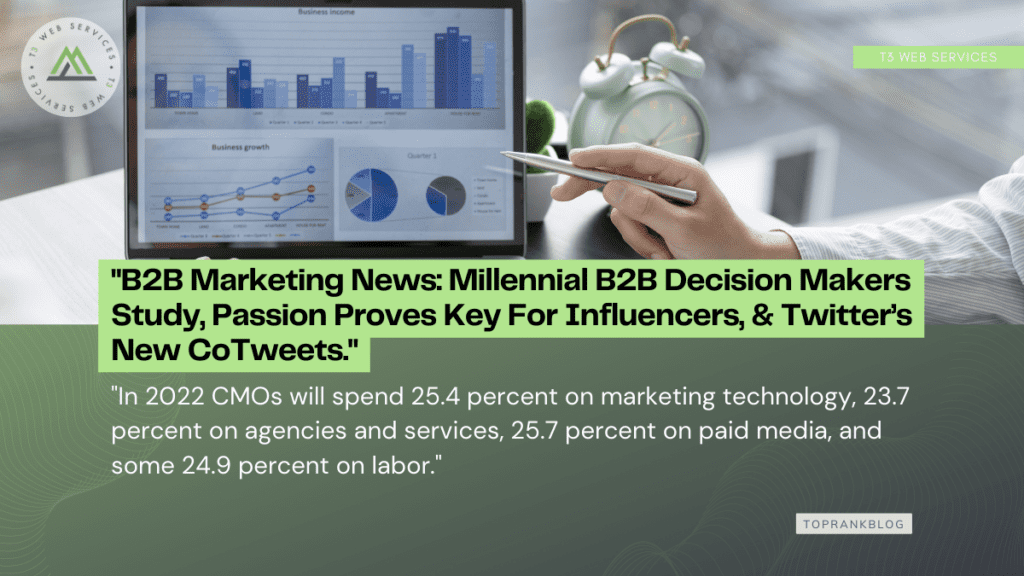

Why B2B marketplaces are now a mainstream digital commerce sales channel [Report]
B2B marketplace sales climbed by 131 percent in 2021, reaching $56.5 billion, making them the swiftest-growing eCommerce channel, with sales expected to reach some $130 billion in 2022, as 57 percent of B2B buyers noted that they were buying more from digital marketplaces during the pandemic, according to recently-released report data. Digital Commerce 360
The Top Challenges B2B Sales Reps Face Early in the Sales Cycle
30 percent of B2B sales professionals have said that getting prospect data to begin conversations was their top challenge, while 38 percent noted that personalizing sales presentation messages to prospects was their leading pain point — two of several findings of interest to B2B marketers contained in newly-released survey data. MarketingProfs
For Influencers/Creators It’s More About Passion Than Money, New Study Finds
Working with brands that share their values and having a passion for a subject area were viewed as the top factors for success as an influencer or creator, while 61 percent of influencers noted they believe that brands should keep the influencer’s audience in mind when forming partnerships, according to recently-released influencer survey findings. MediaPost

https://www.toprankblog.com/2022/07/b2b-marketing-news-071522/
8 Elements Of A Successful Content Strategy
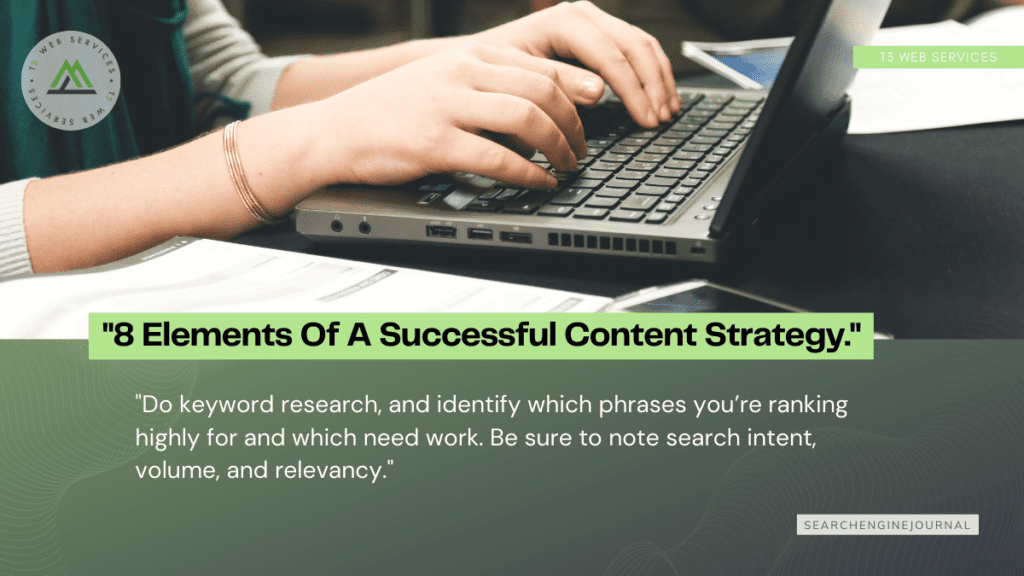

1. Goals
A successful content marketing plan always begins with clearly stated goals. This is a stage many people skip, to their own detriment.
Different types of marketing tactics work to achieve different goals, most of which probably corresponds with a step in your sales funnel.
Some of the more common goals are building brand awareness, increasing traffic, growing an email list, generating new leads, converting new customers, improving customer retention, and upselling.
2. Research
Every tactic in your content strategy should be backed by research to justify it. And putting in the work here will save you lots of headaches down the road.
Start by looking into your target audience. What are their demographics? What are their pain points? How can you help?
There are a number of ways to find this information, including mining digital data, sending out surveys, and interviewing customers.
3. Targeted Topics
By this point, you should have begun compiling a list of potential ideas and messages you want to share.
Identify which topics are most important to each piece of your strategy and how your new content will help achieve your goal.
To evaluate a topic, determine how it will fit with your organizational goals.

https://www.searchenginejournal.com/content-strategy-anatomy/457337/
How content consolidation can improve your SEO performance
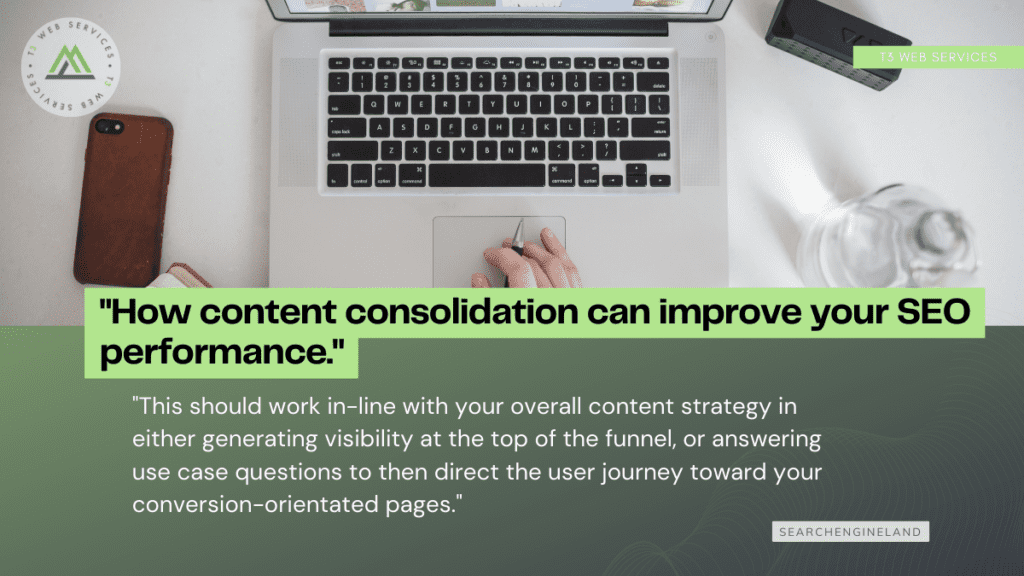

Each page has a different purpose (e.g., to provide information or sell a product/service). A page quality score is then applied to that page type.
As Google has been augmenting and refreshing SERPs in recent months, some seemingly changing or mixing contrasting intents (to provide results to cover multiple common interpretations more than before), “beneficial purpose” has become more poignant.
When we then start talking about a page having a relevant beneficial purpose, and high quality, we enter the realms of describing pages as having:
- High levels of E-A-T.
- High quality and satisfactory levels of main content (defining the core beneficial purpose).
- Good levels of relevant, supporting content.
By contrast, a page can have a strong beneficial purpose (e.g., to sell or promote a product or service), but if it lacks the other factors, it will struggle. Because Google ranks URLs, distributing a topic and its content (and beneficial purpose) over too many pages dilutes potential value.

https://searchengineland.com/content-consolidation-seo-386518
6 Steps to Create a Facebook Funnel That Converts
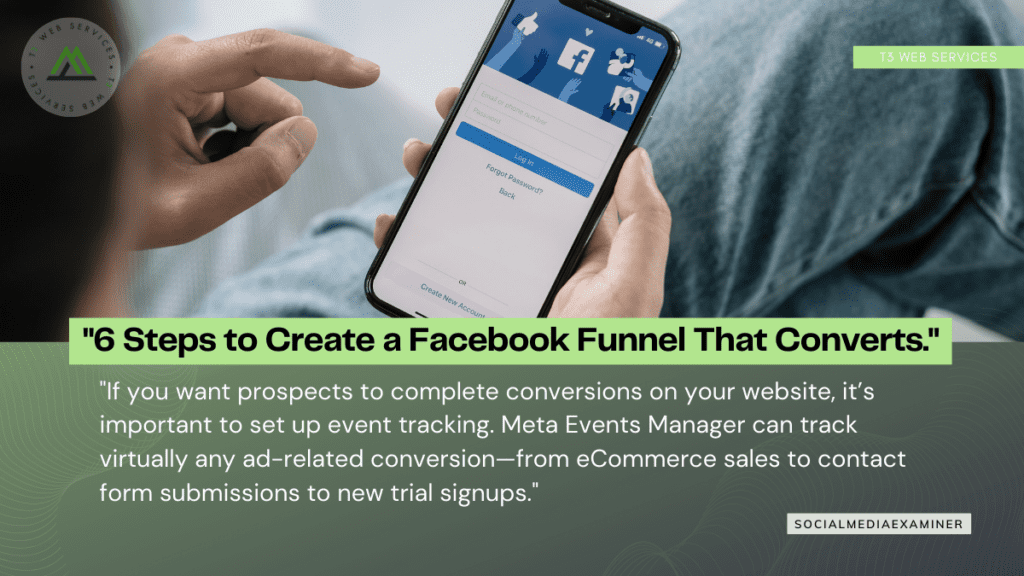

#1: Map Out Your Facebook Marketing Funnel
First, plan your Facebook sales funnel and think about the type of content you can create to guide people efficiently through the buying cycle stages. A typical Facebook sales funnel has three buying cycle stages, plus a bonus fourth phase for returning customers:
- Awareness stage:Introduce people to your products and services while getting them to engage with your branded content.
- Consideration stage:Get people to trust your business and think about how your solutions can address their needs and goals.
- Conversion stage:Prompt people to sign up for your services or purchase your products, often at an introductory rate.
- Retention:Encourage existing customers to switch from free to paid plans, extend their subscriptions, or make additional purchases.
#2: Build a Sales-Focused Toolset
In addition to a Facebook page and an Ads Manager account, you’ll need to add a few tools to your workflow. With these native and third-party tools, you can streamline conversions and retargeting audiences within your Facebook sales funnel.

https://www.socialmediaexaminer.com/6-steps-to-create-a-facebook-funnel-that-converts/
9 Things To Optimize On An Ecommerce Site To Drive Sales
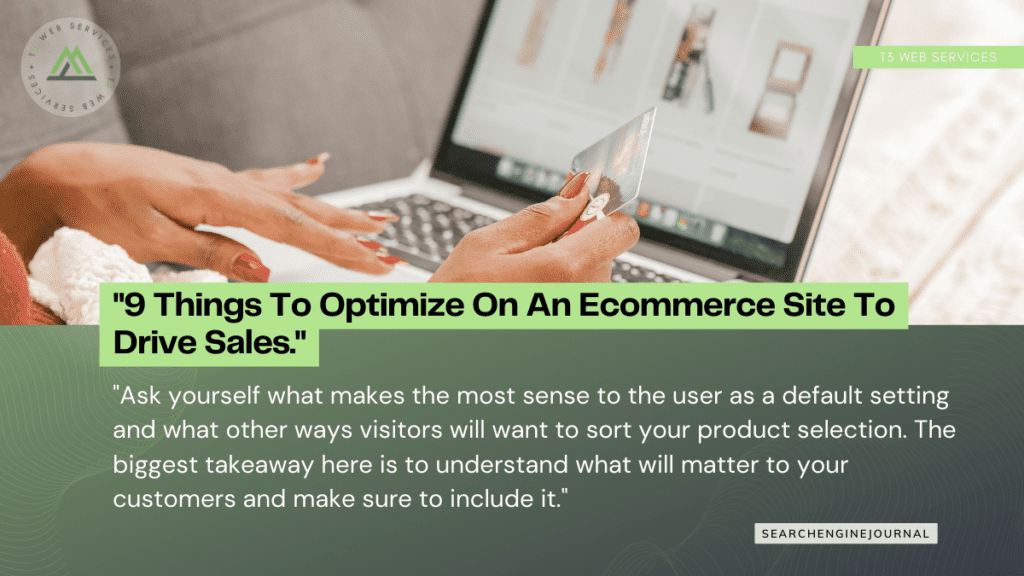

1. Smart Use Of The Intrusive (And Often Annoying) “Pop Up”
Many ecommerce (and non-ecommerce, for that matter) sites will serve you a pop-up the moment you arrive.
Some are necessary – like privacy compliance – while others are strictly promotional.
Pop-ups can work quite well, as long as you follow some basic common sense guidelines:
- Just because you may have a native mobile app for shopping, doesn’t mean you need to prompt your visitor to download it as soon as they get to the site.
- Don’t ask someone to take a survey the minute they get to the website. Wait until they either complete a purchase or leave without doing so.
- If you want to collect an opt-in email, make it worthwhile to the visitor. Provide them with an incentive that will bring near-instant gratification on an immediate purchase.
- Make sure you do not use the types of pop-ups that can cause you trouble. Here’s a recent Search Engine Journal post that goes into greater detail on pop-ups.
2. Site Search Vigilance
Your visitors are telling you exactly what they want when performing a site search query.
Make sure you’re paying attention and acting accordingly.
Here are a few basics to ensure the site search experience is helpful to your customers.
- Review the queries on a regular basis so you know what the most popular searches are.
- Test the search suggestions and subsequent results page for yourself on top queries (especially when a new product is added to the shop).
- Use the search query data to guide your merchandising, promotion, and product decisions. Remember, your visitors are telling you exactly what they want, so respond accordingly and profit.

https://www.searchenginejournal.com/9-things-to-optimize-on-an-ecommerce-site-to-drive-sales/454802/
Small Business Marketing: How To Safely Try New Strategies
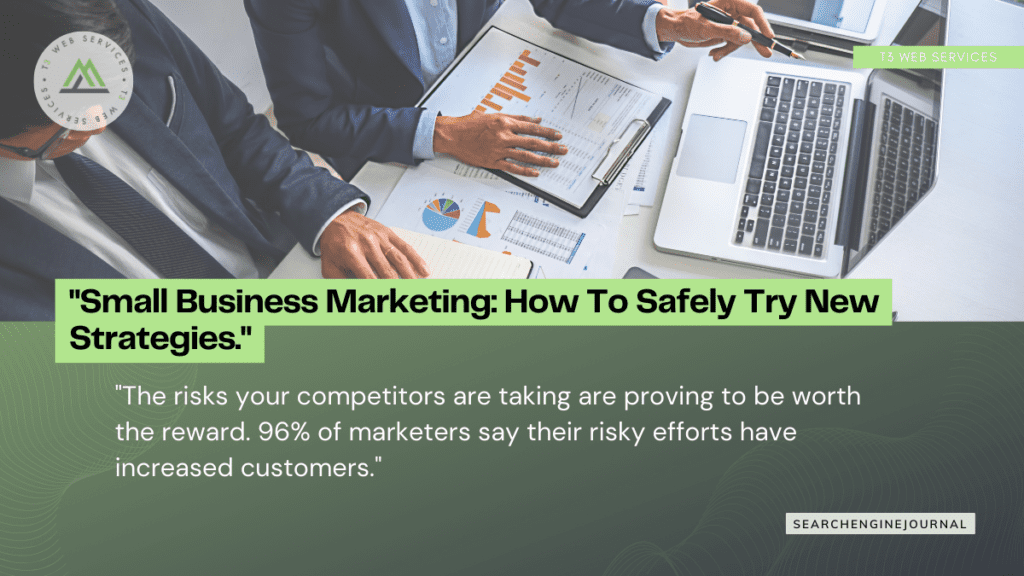

Step 1: Learn Where Marketers Are Already Finding Opportunity
Marketers saw social media channels as a great opportunity to gain new business.
The top social media channels for acquiring new business are Facebook, Twitter, Instagram, and Tiktok.
Marketers were also experimenting with other campaigns:
- 48% began using a new tagline.
- 41% revamped company colors.
- 41% started using a new logo.
- 41% launched a new ad campaign.
- 33% tried a new offer.
These are great, proven places to start.
Step 2: New Vs. Proven Channels – Adjust Budget To Where Competitors Are Spending Money
Take the guesswork out of what works and doesn’t work by looking at where your competitors are allocating their marketing budget.
Long story short, if a channel isn’t working for your industry, your competitors would not spend money and resources on that channel.
Put your money where your competitors are putting their money.

https://www.searchenginejournal.com/safe-small-business-strategy-recap/457837/
Is Your Thought Leadership Content Missing the Point?


Whenever brands claim thought leadership or LinkedIn bios describe the account owner as a thought leader, it makes me want to reach through the screen and shake them by the shoulders, shouting, “You don’t get to say that! It’s not up to you!”
Only the audience gets to choose whose ideas are worth following. If you have to tell people you’re a thought leader, I bet you aren’t one. That’s not how it works.
When thought leadership is claimed as something you do – an activity or goal – instead of a natural byproduct of what you do – the value proposition becomes distorted.
The parallels to marketing are obvious. We are in the persuasion industry. We want our target audience to believe our claims and trust our expertise. And that’s why pursuing thought leadership as a content goal or tactic makes me uneasy. It’s seeking power for power’s sake, to bolster trust in your claims. That kinda sorta suggests those claims might not be as trustworthy otherwise.
Yes, thought leadership is hard, which is why it’s tempting to find shortcuts, hacks, and outsourced talent to do all the original thinking and research for you. Genuine thought leadership comes from within, not without. It draws attention to what you do, not what you say. Above all, thought leadership is earned, not churned.

https://contentmarketinginstitute.com/articles/thought-leadership-content-strategy


Leave a Reply